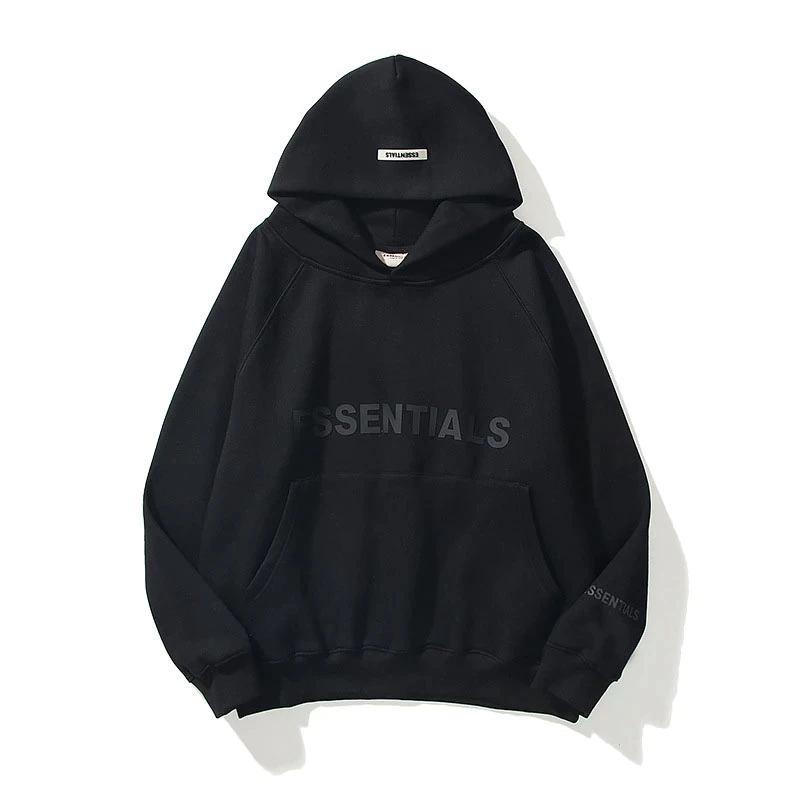Essentials tracksuits have become a staple in modern wardrobes, blending comfort, style, and practicality. This article explores the rich history of tracksuits, tracing their evolution from humble beginnings to contemporary fashion icons.
Origins of the Tracksuit
Early Beginnings
The concept of the tracksuit dates back to the early 20th century. Initially, tracksuits were designed as practical sportswear for athletes. The first tracksuits were made from heavy wool and cotton materials, intended to keep athletes warm during training and competitions. These early versions were far from the sleek, stylish tracksuits we see today, but they laid the groundwork for future innovations.
1930s to 1950s: The Rise of Functional Sportswear
In the 1930s, tracksuits began to gain popularity among professional athletes. The introduction of synthetic materials like nylon and polyester in the 1940s and 1950s revolutionized sportswear, making tracksuits lighter, more comfortable, and better suited for athletic activities. The post-war era saw an increase in organized sports, further driving the demand for functional sportswear.
The Tracksuit in Popular Culture
1960s to 1970s: From Sports to Streetwear
The 1960s and 1970s marked a significant shift in the perception of tracksuits. No longer confined to the realm of sports, tracksuits began to infiltrate popular culture. Influential figures in music and film, such as Bruce Lee and hip-hop artists, embraced tracksuits, elevating their status from mere athletic wear to fashion statements. The vibrant colors and bold designs of tracksuits during this period reflected the dynamic cultural movements of the time.
1980s: The Golden Era of Tracksuits
The 1980s are often considered the golden era of tracksuits. Brands like Adidas, Nike, and Puma capitalized on the growing popularity of sports and fitness culture, releasing iconic tracksuit designs that became synonymous with the decade. The hip-hop movement played a crucial role in popularizing tracksuits, with artists like Run-D.M.C. making them a symbol of urban style. The tracksuit’s association with athleticism and street culture cemented its place in fashion history.
Tracksuits in the Modern Era
1990s to 2000s: Evolution and Reinvention
The 1990s and 2000s saw the tracksuit evolve further, adapting to changing fashion trends. The rise of athleisure—a fashion trend characterized by the blending of athletic and leisure wear—propelled tracksuits into mainstream fashion. Designers began experimenting with different fabrics, cuts, and styles, making tracksuits more versatile and appealing to a broader audience. Celebrities like Britney Spears and Paris Hilton popularized the velour tracksuit, adding a touch of glamour to this casual wear staple.
2010s: High Fashion and Streetwear Fusion
In the 2010s, the tracksuit experienced a renaissance as high fashion brands embraced streetwear influences. Designers like Virgil Abloh, Alessandro Michele, and Demna Gvasalia incorporated tracksuits into their Essentials shirts collections, blurring the lines between luxury fashion and street style. Collaborations between sportswear giants and high-end designers, such as Adidas and Kanye West’s Yeezy line, further elevated the tracksuit’s status in the fashion world.
Essentials Tracksuits: Contemporary Icons
Design Philosophy and Innovation
Essentials tracksuits stand out in the modern era due to their commitment to quality, design innovation, and sustainability. These tracksuits combine timeless aesthetics with contemporary functionality, catering to the needs of today’s consumers. Essentials tracksuits are crafted from high-quality materials, ensuring comfort and durability. The brand’s focus on minimalist design and versatile color palettes makes their tracksuits a perfect fit for various occasions, from workouts to casual outings.
Sustainability and Ethical Production
Essentials t shirt also emphasize sustainability and ethical production practices. The brand uses eco-friendly materials and manufacturing processes, reducing the environmental impact of their products. This commitment to sustainability resonates with consumers who are increasingly conscious of their fashion choices and their impact on the planet.
The Future of Essentials Tracksuits
Innovation and Adaptation
As fashion continues to evolve, Essentials tracksuits are poised to remain a staple in wardrobes worldwide. The brand’s dedication to innovation ensures that their tracksuits will adapt to changing trends and consumer preferences. Advances in textile technology, such as moisture-wicking fabrics and smart clothing, are likely to influence future tracksuit designs, enhancing their functionality and appeal.
Cultural Impact and Legacy
The cultural impact of tracksuits is undeniable. From their origins as practical sportswear to their current status as fashion icons, tracksuits have left an indelible mark on fashion history. Essentials Hoodies continue this legacy, embodying the spirit of innovation, sustainability, and timeless style. As they evolve, these tracksuits will undoubtedly inspire future generations of fashion enthusiasts.
Conclusion
The history of Official Essentials tracksuits is a testament to the enduring appeal of this versatile garment. From their early days as athletic wear to their prominent place in contemporary fashion, tracksuits have undergone a remarkable transformation. Essentials tracksuits, with their blend of quality, style, and sustainability, represent the pinnacle of this evolution. As we look to the future, it’s clear that tracksuits will continue to shape and define fashion trends for years to come.











